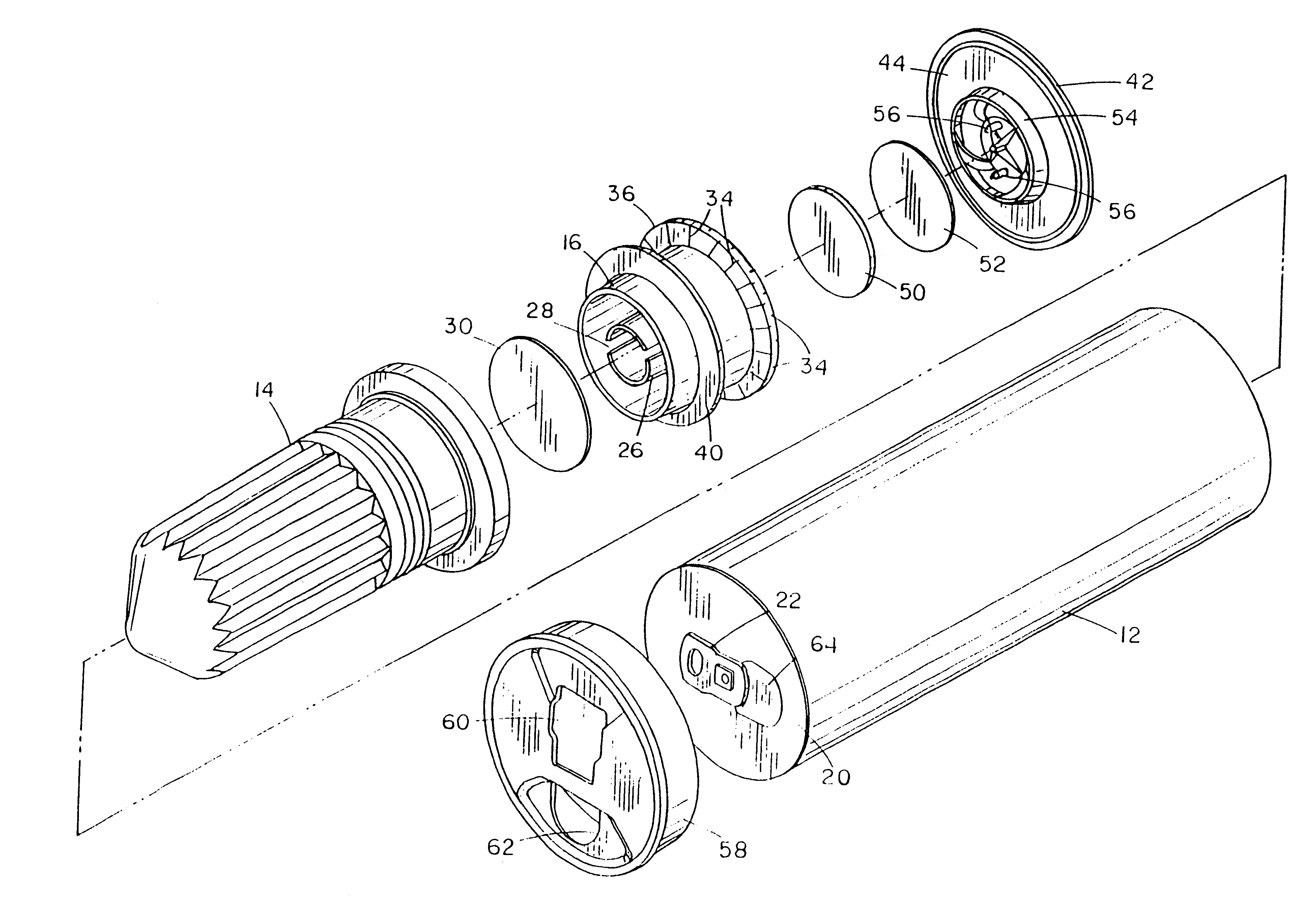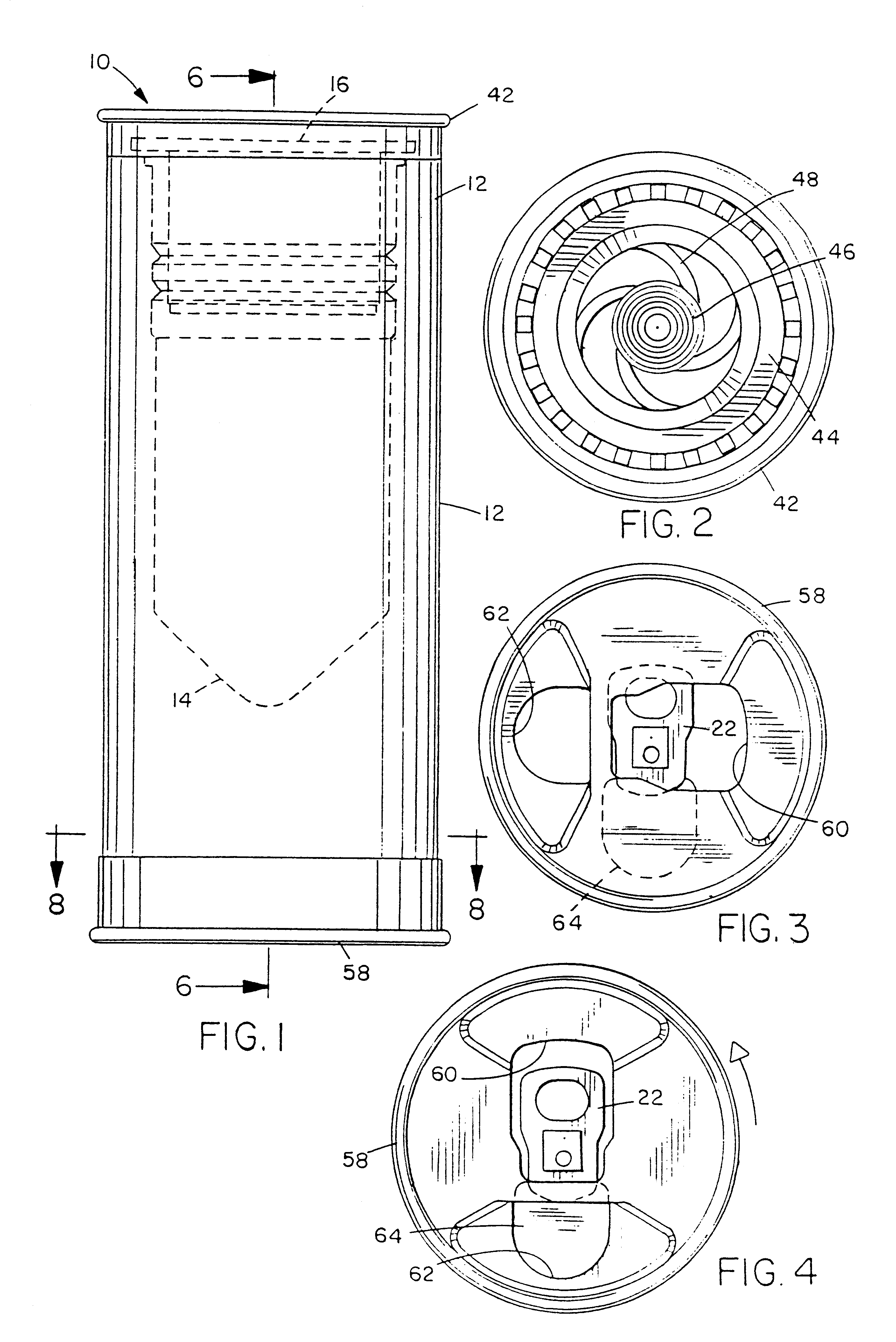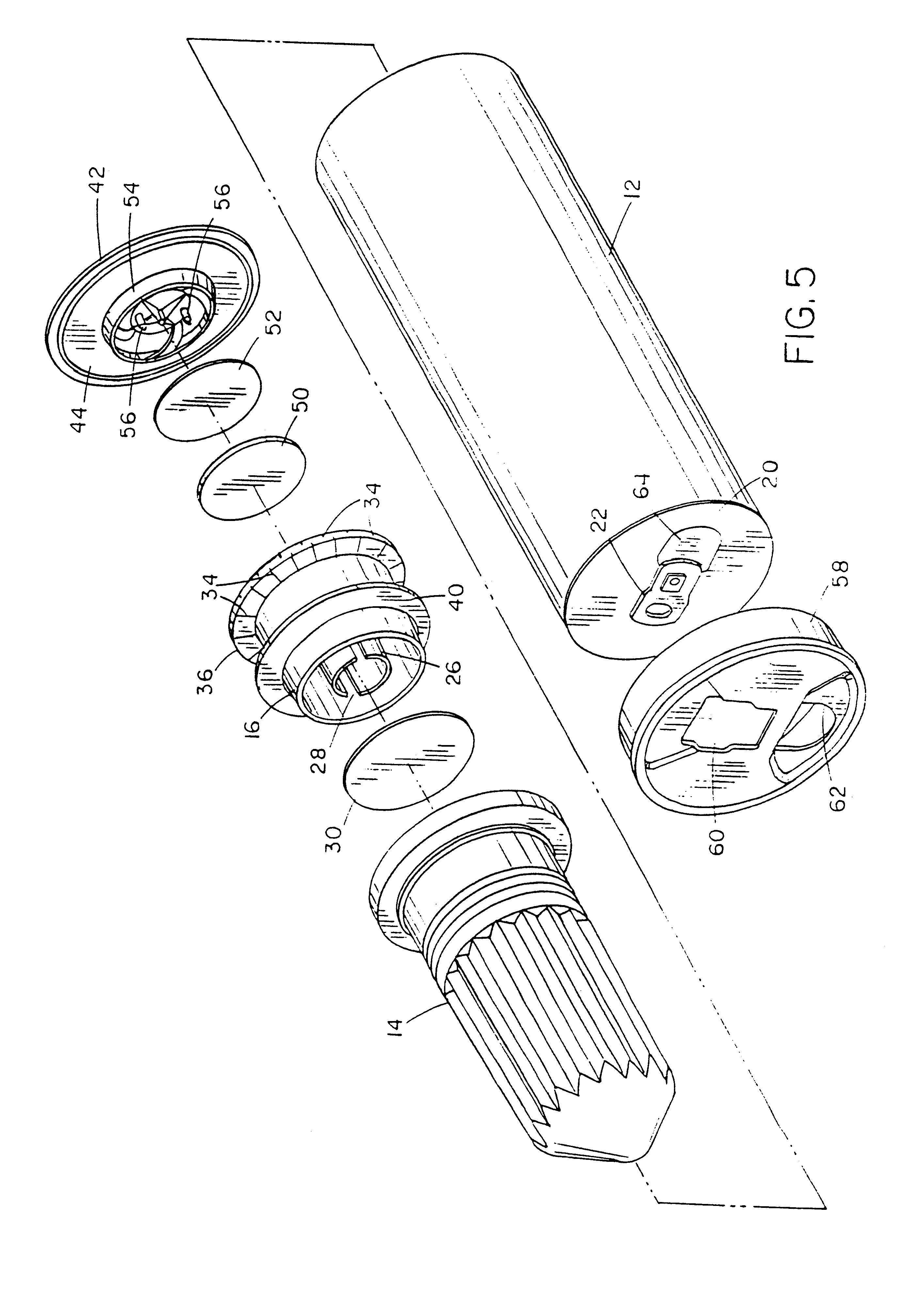Container with integral module for heating or cooling the contents and method for its manufacture
a technology of container and contents, applied in the field of containers, can solve the problems of self-heating containers overheating, presenting a burn hazard, and consuming contents,
- Summary
- Abstract
- Description
- Claims
- Application Information
AI Technical Summary
Problems solved by technology
Method used
Image
Examples
Embodiment Construction
As illustrated in FIGS. 1-8, a container 10 includes a container body 12, a thermic module body 14, and a thermic module cap 16. As best illustrated in FIGS. 5-7, module body 14 has an elongated heat-exchanger portion that extends into container body 16. The interior of this portion defines a reaction chamber in which the reaction occurs that heats (or, in alternative embodiments of the invention, cools) the beverage or other contents 18. The heat-exchanger portion has a corrugated or pleated wall to increase surface area and, as a result, heat transfer. Although in the illustrated embodiment the wall is corrugated or pleated, in other embodiments the wall may have other suitable geometries. Module cap 16 is press-fit in the open end of module body 14. An endcap 20 with a pop-tab closure 22 of the type commonly used in beverage cans is crimped over the other end of container body 12 in the manner of a conventional beverage can.
Module cap 16 is of unitary construction and is made of ...
PUM
| Property | Measurement | Unit |
|---|---|---|
| temperature | aaaaa | aaaaa |
| temperature | aaaaa | aaaaa |
| force | aaaaa | aaaaa |
Abstract
Description
Claims
Application Information
 Login to View More
Login to View More - R&D
- Intellectual Property
- Life Sciences
- Materials
- Tech Scout
- Unparalleled Data Quality
- Higher Quality Content
- 60% Fewer Hallucinations
Browse by: Latest US Patents, China's latest patents, Technical Efficacy Thesaurus, Application Domain, Technology Topic, Popular Technical Reports.
© 2025 PatSnap. All rights reserved.Legal|Privacy policy|Modern Slavery Act Transparency Statement|Sitemap|About US| Contact US: help@patsnap.com



